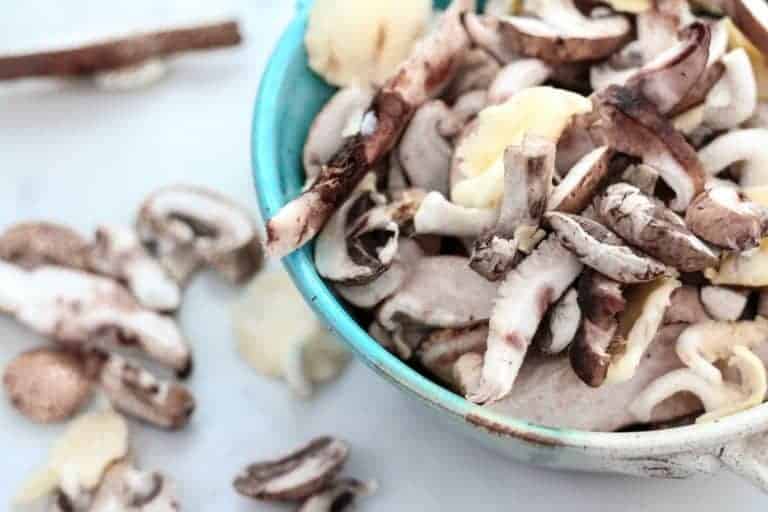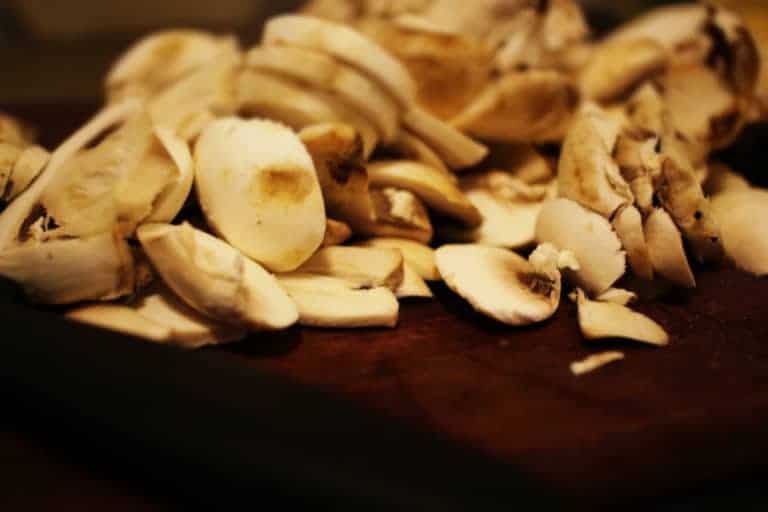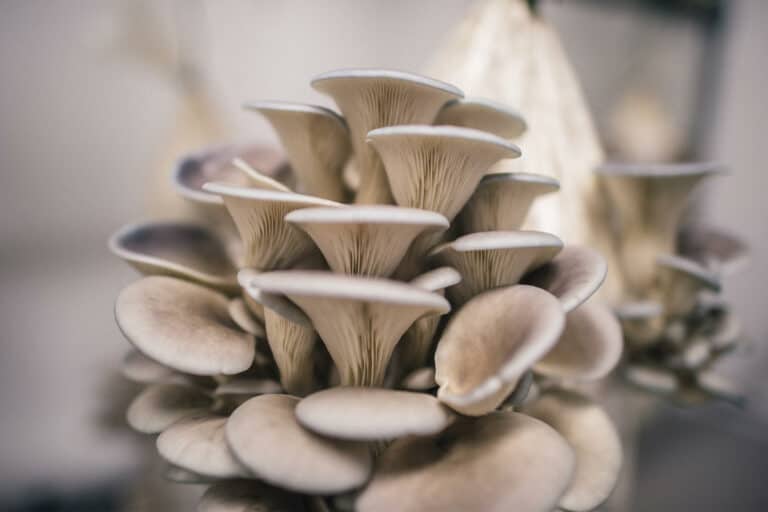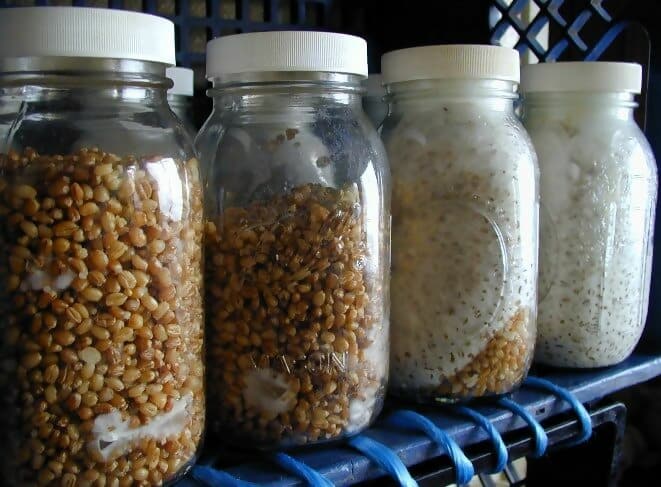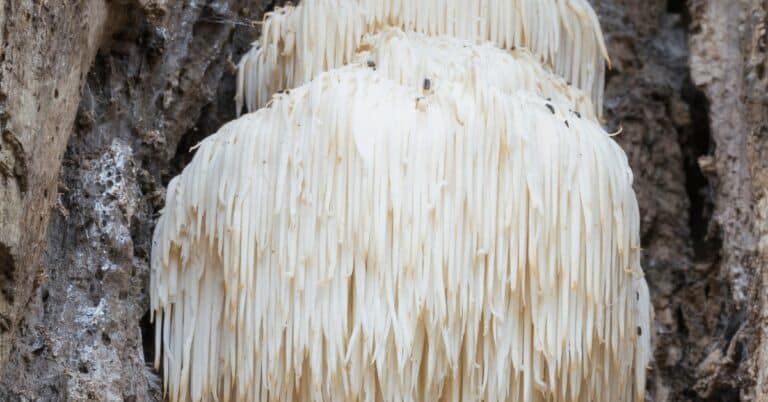Truffles: The crown jewel of mushrooms
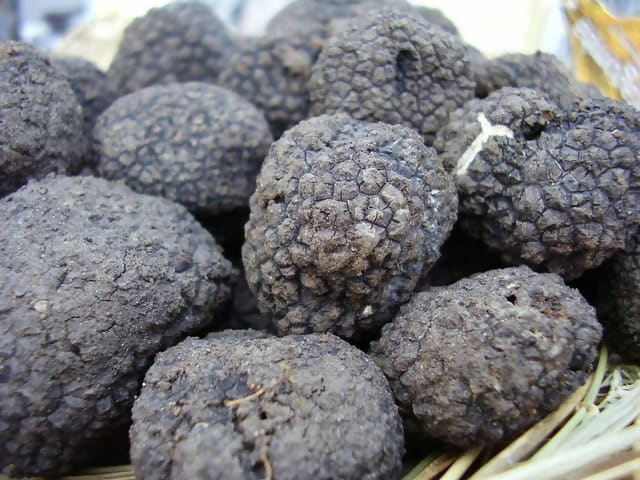
Truly the pinnacle in the world of mushroom cuisine, the truffle is by weight one of the most expensive foods in the world. Truffles are a fancy, delicious delicacy in many different cuisines throughout the world
In this article, we will explore what truffles are, their nutrition, how they are found, and how they are used in cooking. We’ll end by recommending a few truffle recipes that will bring out the best of these culinary gems.
Introduction to Truffles
Not to be confused with truffle chocolates, truffles refer to the members of either the Tuber or the Terfezia genus. Truffles are the edible fruiting bodies of mycorrhizal fungi. They live in association with the roots of specific trees such as beech, birch, hazel, oak, and pine. They rely on nearby animals who are attracted to their scent to disperse their spores.
Truffles are subterranean fungi (up to thirty centimeters below ground) that can be found throughout North America, Europe, Asia, Australia, and North Africa. Most famously, the highly prized truffles are found in the wild of Alba, Italy and the hardwood forests of neighboring regions.
Truffles have rounded fruiting bodies that can be lobed with furrows. It has a yellowish, tan, or dark brown color. The interior is solid white and marble-like in white species and black in black species with white veins that radiate from the base of the fruiting body. They can reach a diameter of about 5 inches and take about ten years to fully mature. They are commonly identified based on their distinctive, earthy aroma that signifies they are fresh.
The below species of truffles are especially important in the commercial world and are widely sought after in upscale cuisine all over the world.
Black Truffle
The French black truffle, Tuber melanosporum, is found in the hardwood forests of Southern Europe between December and March. They have a black-brown skin with white veins that turn brown as it ages. They can weigh up to three ounces and can be up to three inches in diameter. Their flesh is very aromatic due to the presence of several volatile organic compounds found in the fruiting body. Other notable, highly sought-after mentions are the black summer truffle, Tuber aestivum, and Burgundy truffle, Tuber uncinatum, both of whom have similar physical characteristics to the French black truffle. Currently, black sell for about $1000 per pound. The other truffles sell for less, about $300-900 per pound. In France, authentic black truffles are known as black diamonds. They are revered in some parts of the country, in fact, a special mass ceremony is held in southeastern France in its honor.
White Truffle
The white truffle, or Tuber magnatum, is found in Southern Europe, mainly in northern Italy. They are one of the largest truffles and are highly prized by gourmet chefs all around the world. They grow symbiotically with oak, hazel, beech, and poplar and can be found fruiting from September to December. Their flesh is cream or brown and has an earthy aroma that is hard to pinpoint but similar to a mixture between garlic and certain quality cheeses. Since white truffles can’t be farmed commercially, they sell for over three times as much as the black truffle at approximately $3000 per pound. They can grow considerably larger than other truffles. In an auction, a 2-lb white truffle sold for $330,000 in Macau in 2007.
Other Truffles Found in North America
Truffles are rare in the United States, but there are some species that do grow in the country. In Oregon, you can find the Oregon black and brown truffle Leucangium carthusianum and Kalapuya brunnea, respectively. These truffles are known to grow in association with Douglas Fir trees. These are either found in the wild or cultivated in orchards by inoculating certain trees. The pecan truffle T. lyoni can be found in the southern US like Georgia near pecan trees orchards. Oregon black truffles and pecan truffles sell for about $200-300 per pound.
False Truffles
There are false truffles that look very similar to true truffles but only a few are edible and some are toxic. While they also grow underground and have a similar size, they can usually be distinguished because of they lack the distinctive truffle aroma, have a spongy, pulpy interior and, sometimes, an internal stalk or column. If you think you’ve found a truffle, it’s always a good idea to consult a professional or a guidebook to confirm it isn’t a false truffle.
Truffle Hunting: Mining for Edible Gold
Many different countries, including the United States, have tried cultivating truffles with limited success. Some farms, including in the Pacific Northwest, have successfully inoculated host trees to produce French black truffles.
Mostly though, truffles are found in the wild wooded forests in Europe, especially Italy and France, with the help of truffle dogs who smell them and fetch them from underground. This is normally done during the night and in locations that are secret to the truffle hunters. This article is a good resource on learning about the different types of dogs used to hunt for truffles.
Additionally, some truffles are found by raking the soil, but this is definitely not a preferred method because it can damage the ripe fruiting body.
The European soils and rainy summers produce the rich, earthy flavor. When they are ripe in the fall and early winter, they emit a pungent, earthy aroma that attracts wild animals. Traditionally, truffle gatherers would use pigs to find them, but the pigs would eat them before they even made it into the hands of the truffle hunter.
Currently, Urbani controls 70% of the world’s truffle trade. The biggest consumer of European truffles is America, where the truffle goes from European truffle hunter to American chef in about 24 hours.
Due to climate change and increasingly worse droughts, annual harvests have plummeted from two thousand tons of truffles per year 100 years ago to only about 30 pounds per year today. This largely accounts for their high price and increasing demand.
As a result of their diminished supply, they are becoming scarce, stolen, or even trafficked in a mafia-style manner. Real truffles are also being threatened by inferior imports from China, the Chinese truffle, which looks the same but flaunts little to no aroma or taste compared to authentic truffles.
The Nutrition of Truffles
The nutrient profile of truffles can vary between species and where they are grown. Due to the small amounts normally consumed, they are not the most potent source of nutrients but they are definitely nutritious.
Truffles are high in protein and low in calories and carbohydrates
Truffles are high in protein. They provide all nine essential amino acids and are about twenty to thirty percent protein by weight. This makes them very vegetarian- and vegan-friendly food choices.
They contain about 2g of carbohydrates per serving 143 calories per cup, which makes them friendly for diabetics and especially well-suited for any ketogenic diet. Most of the carbohydrates are from the mushroom polysaccharides, including chitin and glycogen.
Truffles are an excellent source of fiber
They are also an excellent source of soluble fiber, containing about 20g of fiber per cup. They contain no cholesterol, making them a heart-healthy option.
Truffles are rich in several vitamins and minerals
Truffles are a good source of vitamin C, B, phosphorus, sodium, calcium, magnesium, manganese, and iron. They will also produce vitamin D like other mushrooms when they are exposed to sunlight.
The Bioactive Components of Truffles
Black truffles were thought to have medicinal qualities in the Middle East and the ancient Greeks and Romans considered them to be an aphrodisiac. Most of the studies on the bioactive components of truffles have been in test tube studies, which has very limited applicability to humans. Further research will have to be conducted to assess their health benefits or recommend truffles for any specific health condition.
In vitro studies have shown that black and white truffles possess powerful anti-inflammatory and anti-cancer properties, showing toxicity to several cancer cell lines.
Other studies have demonstrated that truffles possess powerful antioxidant properties that can help clean up free radicals in the body and prevent oxidative stress. Oxidative stress is associated with many different human diseases, including cardiovascular disease and cancer. Some of the antioxidants found in truffles include lycopene, gallic acid, and homogentisic acid.
Truffles are thought to also have antimicrobial properties. Extracts of Terfezia claveryi, the desert truffle, inhibited the growth of bacteria in vitro, a bacteria that can cause human eye infections.
Traditionally, truffles have been associated with having powerful aphrodisiac properties. Although not clinically supported, truffles are thought to secrete pheromones from their fruiting bodies resembling the male pheromone androstenone.
The pungent, unique smell of truffles is thought to be the result of over a dozen volatile aromatic compounds, including alcohols, ketones, aldehydes, and sulfur compounds.
Truffles: A True Culinary Delicacy
Truffles are used in a variety of exotic culinary dishes, side dishes, dips, and soups. They are fantastic eaten raw or grated over eggs, pasta such as ravioli, or risottos. They can also be added to slow-cooked stews to bring their flavor to a whole new level.
Truffles can be sliced and placed into meats. They are often used in upscale French meat dishes like foie gras or in stuffings. They are even added to burgers by glazing the meat with truffle oil. Truffles are rich in umami, which is responsible for their smooth, savory taste.
Truffles are well-known in exotic cuisine for their unique, intense smell. The more expensive truffles smell even more intense. This is why (along with their high price) they are used in such a small amount on a dish.
Truffles are used in many different ways besides raw
Approximately 10% of the total truffle market is used to create a wide variety of truffle products. This includes truffle oils and vinegar, truffle paste, truffle honey, truffle sauces, truffle salt, truffle butter, and much more.
Since the aromatic compounds in truffles are alcohol-soluble, some commercial producers manufacture truffle alcohol like truffle vodka, which can be made into cocktails or used to flavor dishes.
Truffle Preparation and Storage
Truffles are most commonly eaten fresh and raw shortly after being harvested. This is because the intensity of the flavor decreases rapidly once they are taken from below ground. Therefore, the shelf life of a truffle is not long, so the expensive truffles are very quickly sold in markets and auctions and distributed around the world in iced containers.
Truffles can be purchased in specialty shops, farmers markets, or can be ordered online where they will be shipped fresh and nearly frozen. Dried truffles aren’t quite the same as fresh truffles, but they are easier to find. They are sold widely online, gourmet food stores, and some farmers markets.
In terms of storage, wholesalers will place fresh truffles on rice on serving trays in a refrigerated room. Once stored sealed in the refrigerator, truffles need to be eaten within a few days or up to a week. To increase their shelf life, truffles can be frozen for up to two weeks in a freezer-proof jar or immersed in a mild oil.
Truffles are sometimes stored alongside rice and eggs. The pungent aromas with penetrate the eggshells and rice kernels when put in a glass jar in the refrigerator. These eggs and rice can be made into an omelet or pilaf, adding any extra savory boost.
Rotten truffles have a faint smell and will be slimy or fuzzy. Moisture will accelerate the rotting process so truffles shouldn’t be made wet and should not be stored in the crisper drawer, the most humid part of the refrigerator.
Truffles are washed gently with water, cleaned using a brush to remove any soil or debris, and thoroughly dried. Since they are mostly eaten raw, they must be cleaned more thoroughly than other mushrooms.
How to Use Truffles
If you are lucky enough to be in possession of some truffles, there are lots of things you can do with them to bring out their great flavor and spice up any dish. In general, truffles aren’t fried, boiled or baked. Instead, they are shaven over dishes or added to oils. Here are two great recipes that incorporate these two methods.
Make A Highly Savory Truffle Oil
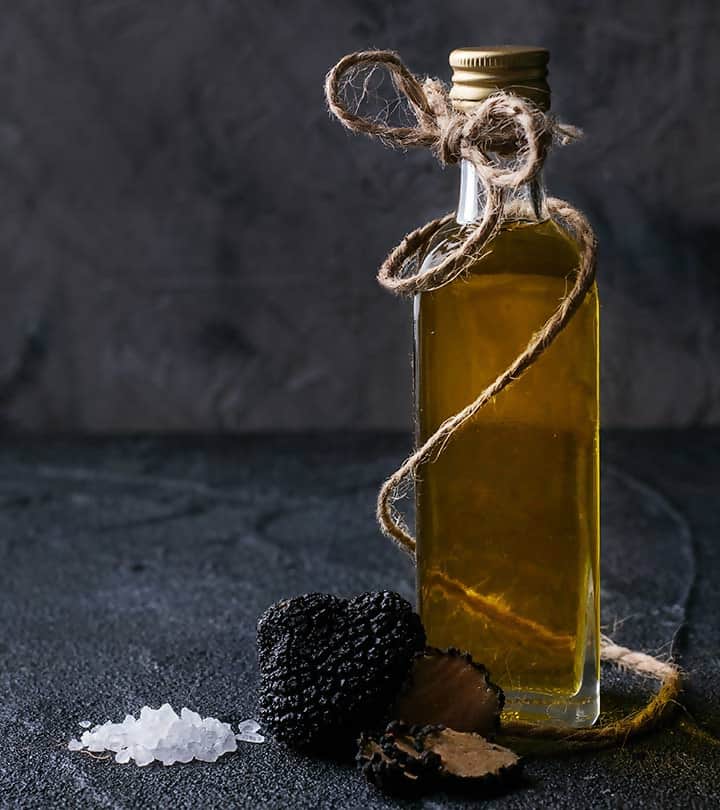
To make delicious truffle oil, you will need one cup of high-quality extra-virgin olive oil and 1 small, fresh truffle. This oil will last for about a month in the refrigerator. This truffle oil is highly versatile and can be used on pizza, popcorn, veggies, pasta, and many other dishes that use oil. This recipe makes cold-process truffle oil, but hot-processed truffle oil can also be made. This is similar in method, but the olive oil is heated to 180C and simmered for 5 minutes with the truffle pieces and then cooled, bottled, and stored in the same way.
- Slice the truffle into small pieces, enough to fill about a teaspoon. If you’re using dried truffle, use half the amount because it is more potent.
- Fill a sterile glass jar with 1 cup of olive oil. The jar should have a screw-on lid.
- Add the truffle gratings and seal the jar tightly.
- Shake the jar and store in a cool, dark place or in the refrigerator. The oil will soon be immersed with the earthy aroma of the truffle.
- After one week, the oil will be ready for use. You can optionally strain the truffle oil at this point, but the grounds may add even more great truffley flavor.
Try Black Truffle Scrambled Eggs and Toast
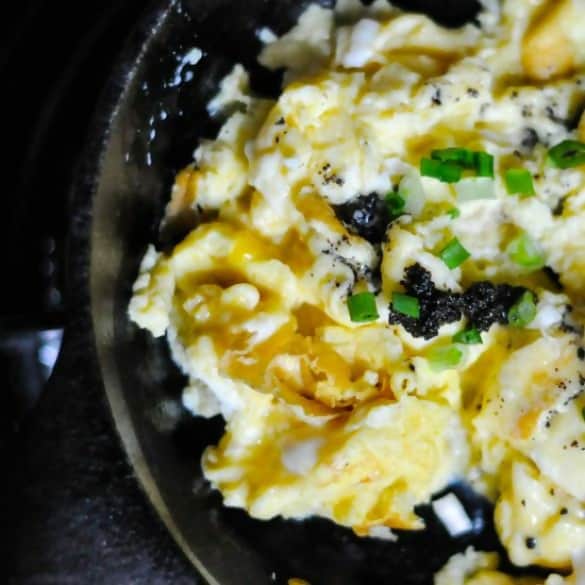
For this recipe, you will need 3 eggs, one small black truffle, butter, sea salt, mild cheddar cheese, and some sourdough bread.
To bring out the best flavor and aroma of the black truffles, heat them slowly.
- Melt 1 tablespoon of butter in a medium skillet on medium heat.
- Add three eggs into the skillet
- As the eggs are cooking, shave the black truffle, about 10 grounds or 0.35 oz.
- Scramble the eggs and truffle together and add the grated cheddar cheese
- Serve when starting to firm with sourdough toast and optionally add more grated truffle on top. Top with optional chives to garnish.
Final Thoughts
Truffles are one of the ultimate mushroom ingredients that can bring out the best of a wide range of dishes. Not only are they very nutritious, but they are also full of antioxidants and may help the body stave off inflammation.
While perhaps white truffles are culinary gold, black truffles are a more affordable relative that can be purchased relatively cheaply in spare amounts. When truffles aren’t in season, many different truffle products like oils, butter, and pastes can be purchased and included in pasta, eggs, pizza, stews, and much more.
Although pricey, having an authentic truffle experience will likely be the most rememberable meals of your life. If you’re interested in trying a truffle meal, be on the lookout for truffle lookalikes like the Chinese Truffle. The price may be high, but the genuine truffle flavor cannot be found anywhere else.

